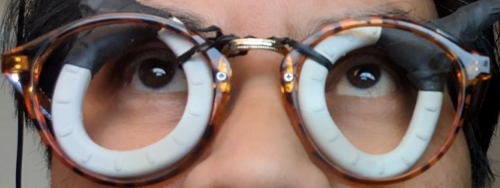Thanks @OptimalHealth for prompting me to respond.
Many people settle on the Omni-8 protocol. Why?
One simple reason might be that I suppose some use it because it is the default program on most of our systems, so they don’t bother changing it.
I also usually suggest trying it when I am asked, but almost always along with a few other suggestions because people’s responses will vary.
But I know many people, including myself, who have tried other protocols and they very often tend to gravitate toward Omni-8 because they get the best overall results.
This is not an accident. The Omni-8 protocol is the result of extensive beta-testing that I did with ICES-PEMF “power users” back during system development for the B5-C5-M1 series of devices. The beta testing was actually using the newly-designed model A9, but reprogrammed for beta testing of pulse pattern protocols for the next generation of more advanced ICES-PEMF systems.
Yes, there were other competing pulse patterns, numbered Omni-1 through Omni-9.
Several of these were based on the earlier legacy pulse patterns, such as the “A9” and “P2”. But all had additional pulse pattern features, and I was attempting to cast broad nets to capture the most effective sets of pulse patterns from a wide range of candidate patterns, thus the designation “Omni”.
Also, I was testing these patterns both containing, and against, patterns that had been popularized by PEMF marketers, such as “Schumann Frequencies”.
Long story short, what I found was:
1- All of the different pulse patterns work pretty well, because, as I always assert: the most important thing is pulse waveform shape, not the “frequency” of the pulses So, all of the patterns worked pretty well.
2- The “frequencies” that everyone insists upon, such as Schumann resonances, work fine, but absolutely no better than any other similar frequency.
3- There was a small preference for frequency patterns that contain pulse patterns that I specifically developed to simulate the neuronal pulse patterns during fetal neuro-musculo-skeletal development in utero. These pulse patterns are known by developmental biologists to be essential for proper early development of muscle, bone, and nerve tissue. I hypothesized that these patterns would be ingrained in the cellular response to similar signals, and would therefore result in a shift of cells toward a state of growth and development rather than one of decay and degeneration.
During beta testing, without knowing the details of the patterns, people expressed a preference for the pulse patterns that contained these hypothetical pro-growth, pro-development signals. Overall, the opinion was that this class of pulse pattern was about 15% to 20% better than the other patterns.
I crunched all the beta test data, and the winner was…
Omni-8
I don’t like to over-sell anything, so I just quietly included it in the list of about 30 pulse pattern protocols that are available on the C5 and M1, and by default now on the model A9.
I am delighted to see that many experienced users, without any heavily biased prompting from me, eventually gravitate toward the Omni-8 as their go-to protocol, which is what I would have expected from the results of the beta testing.


 alas… if i could only sell this online: “forever sight glassless glasses”
alas… if i could only sell this online: “forever sight glassless glasses”
